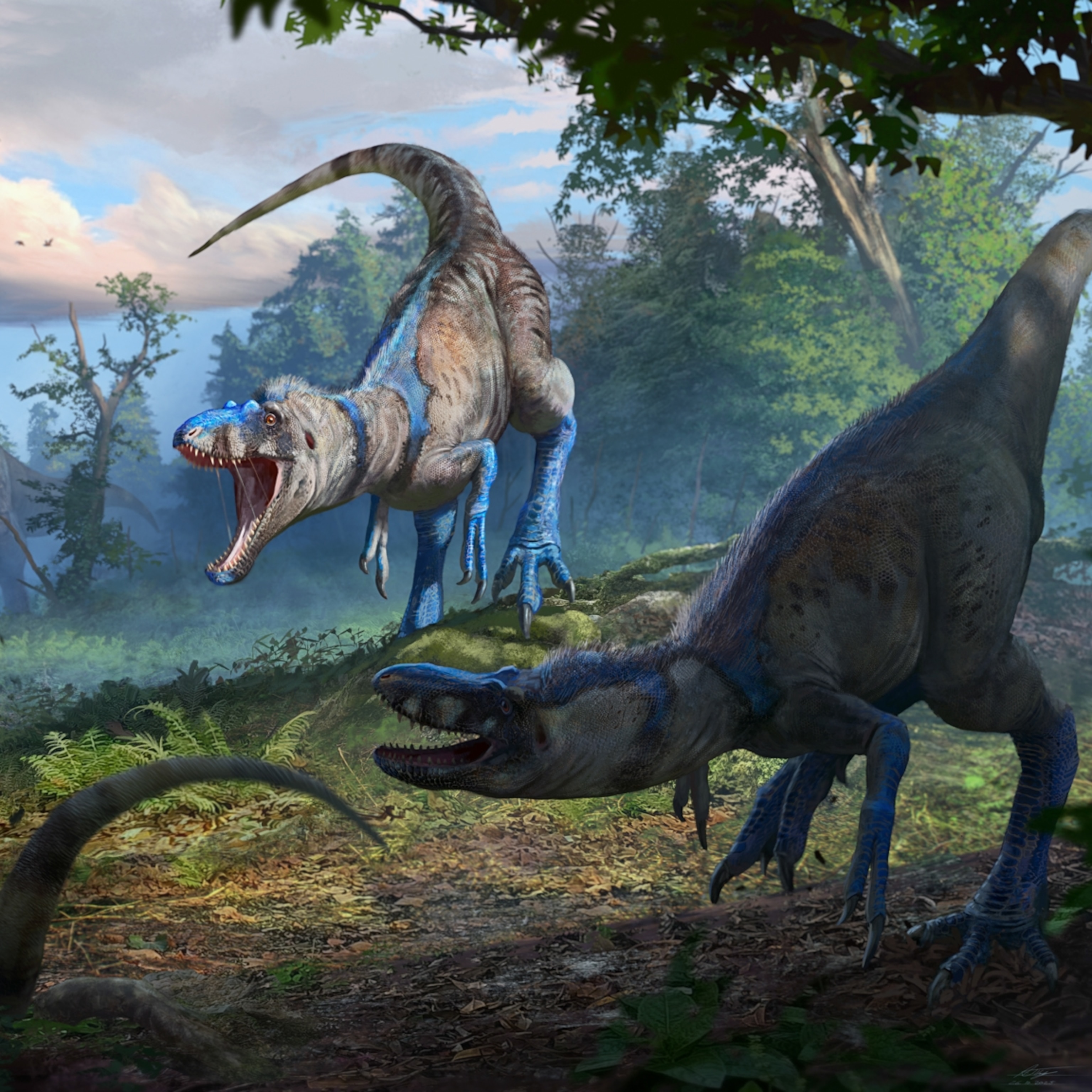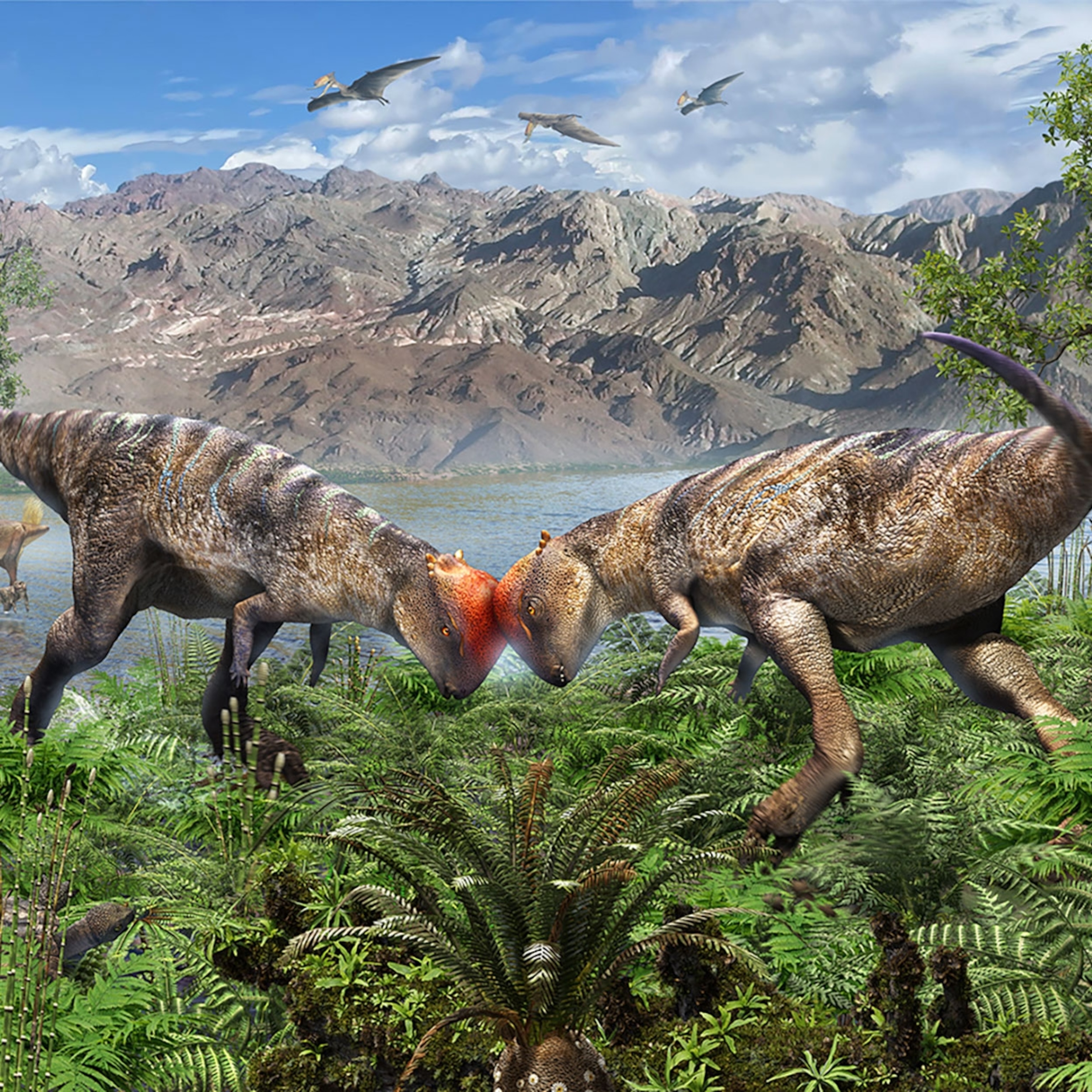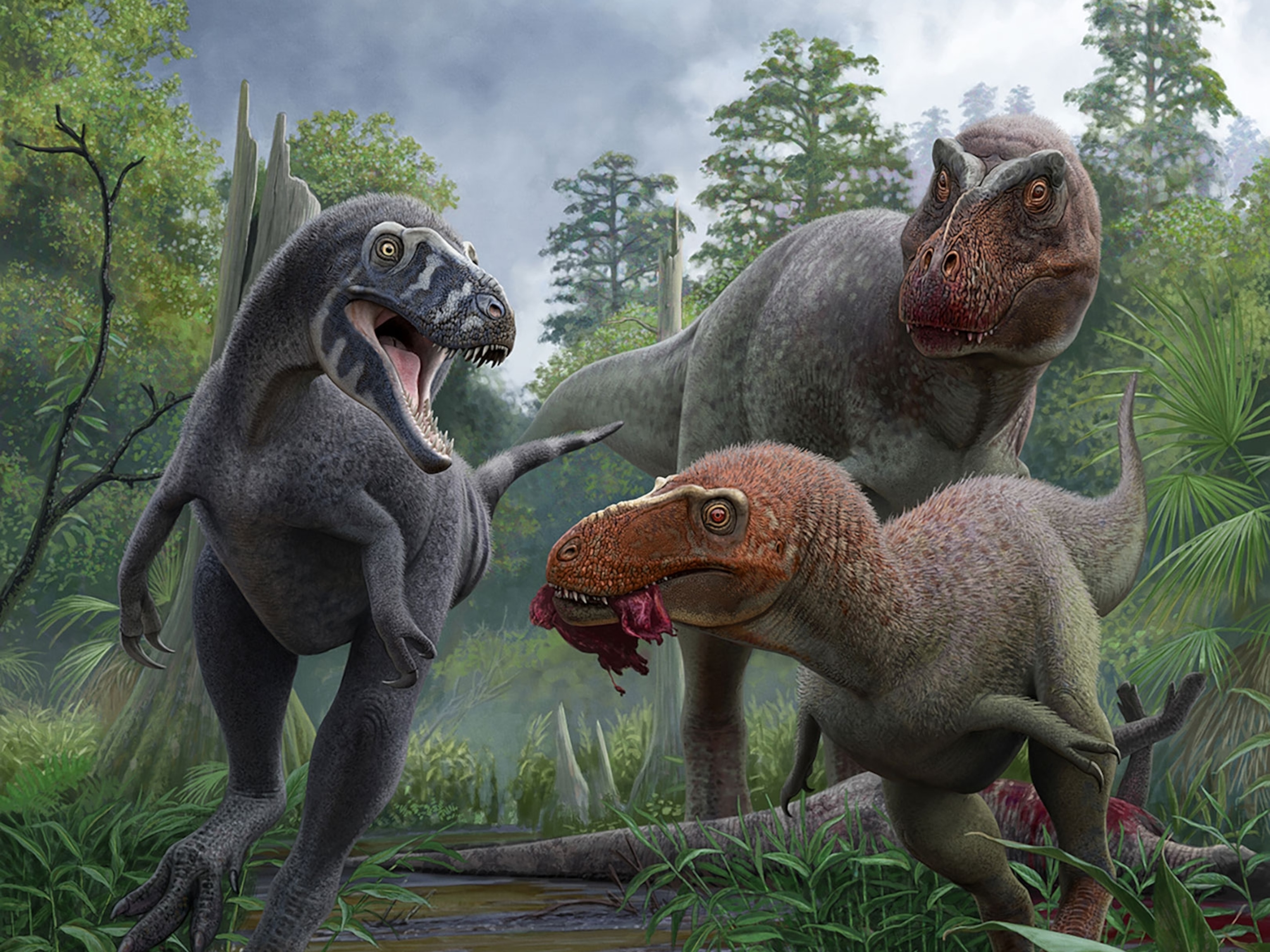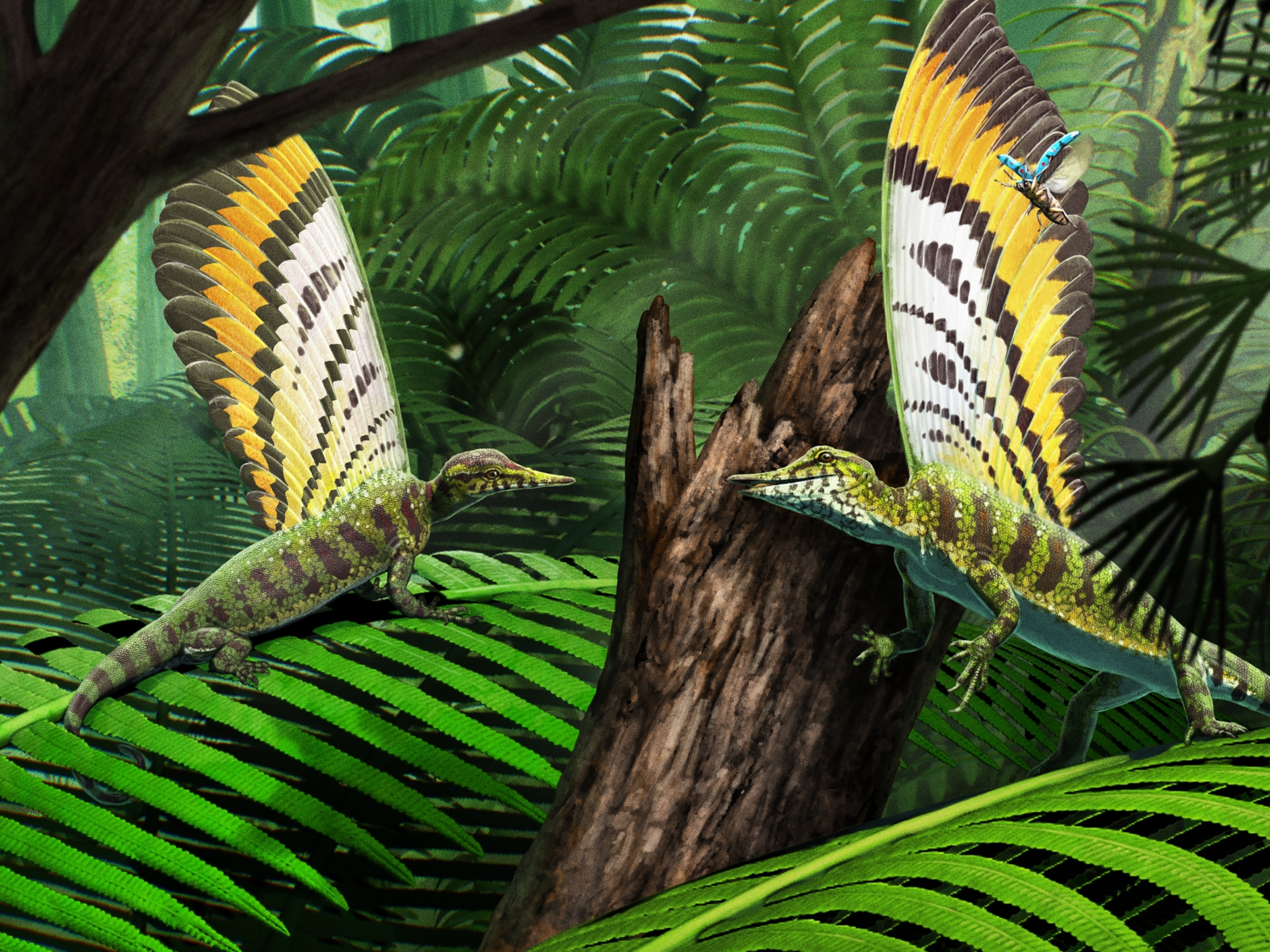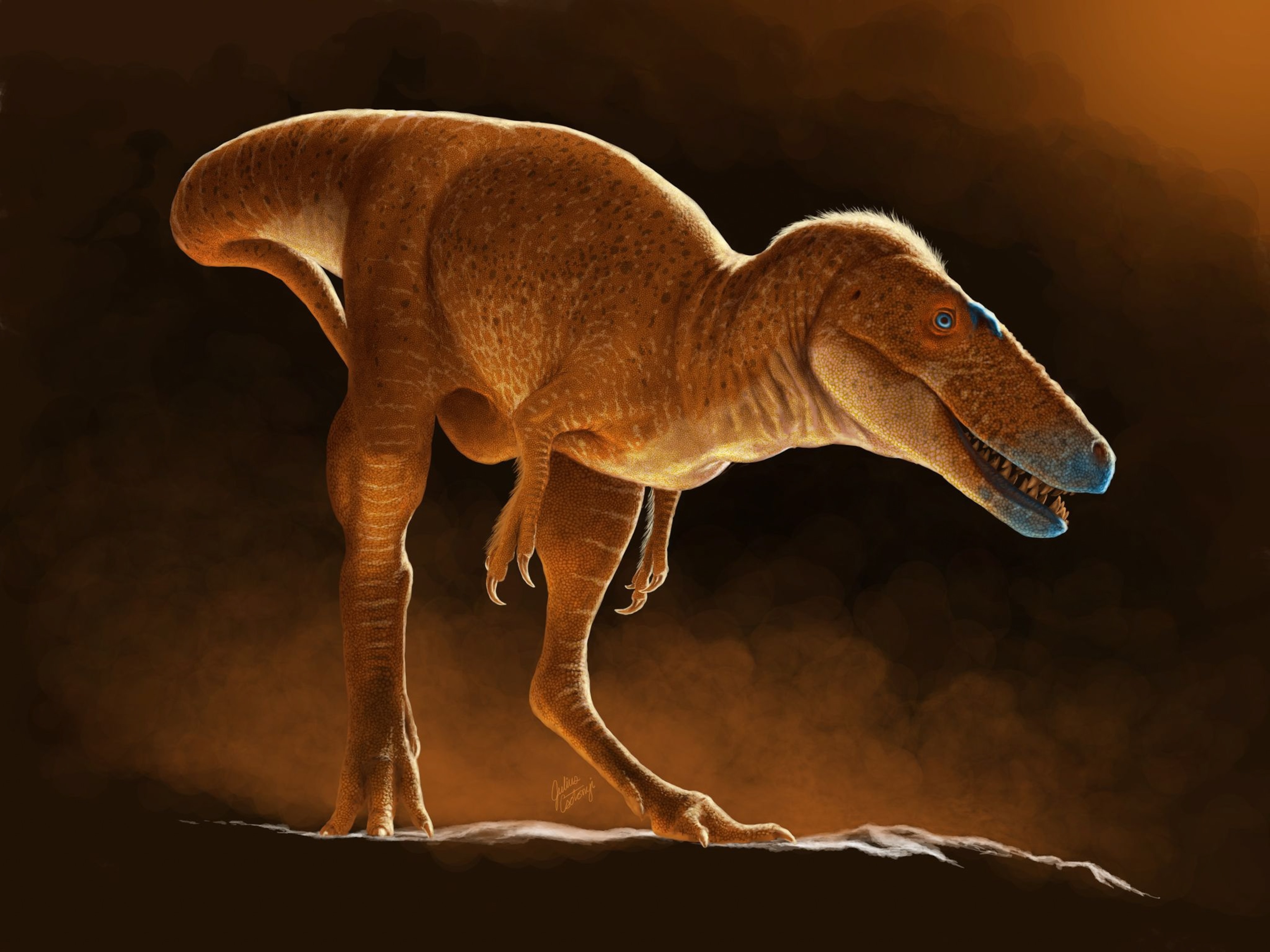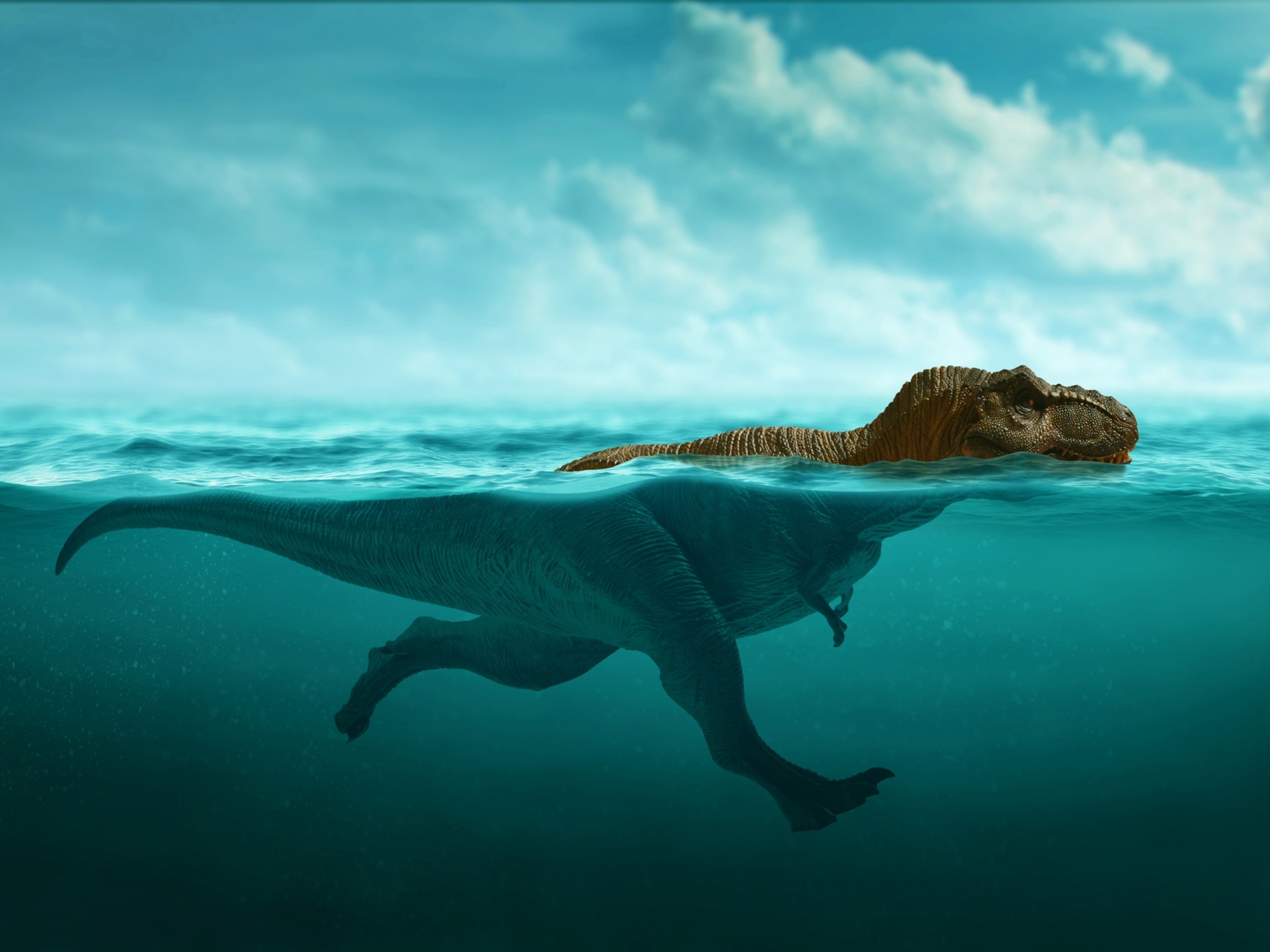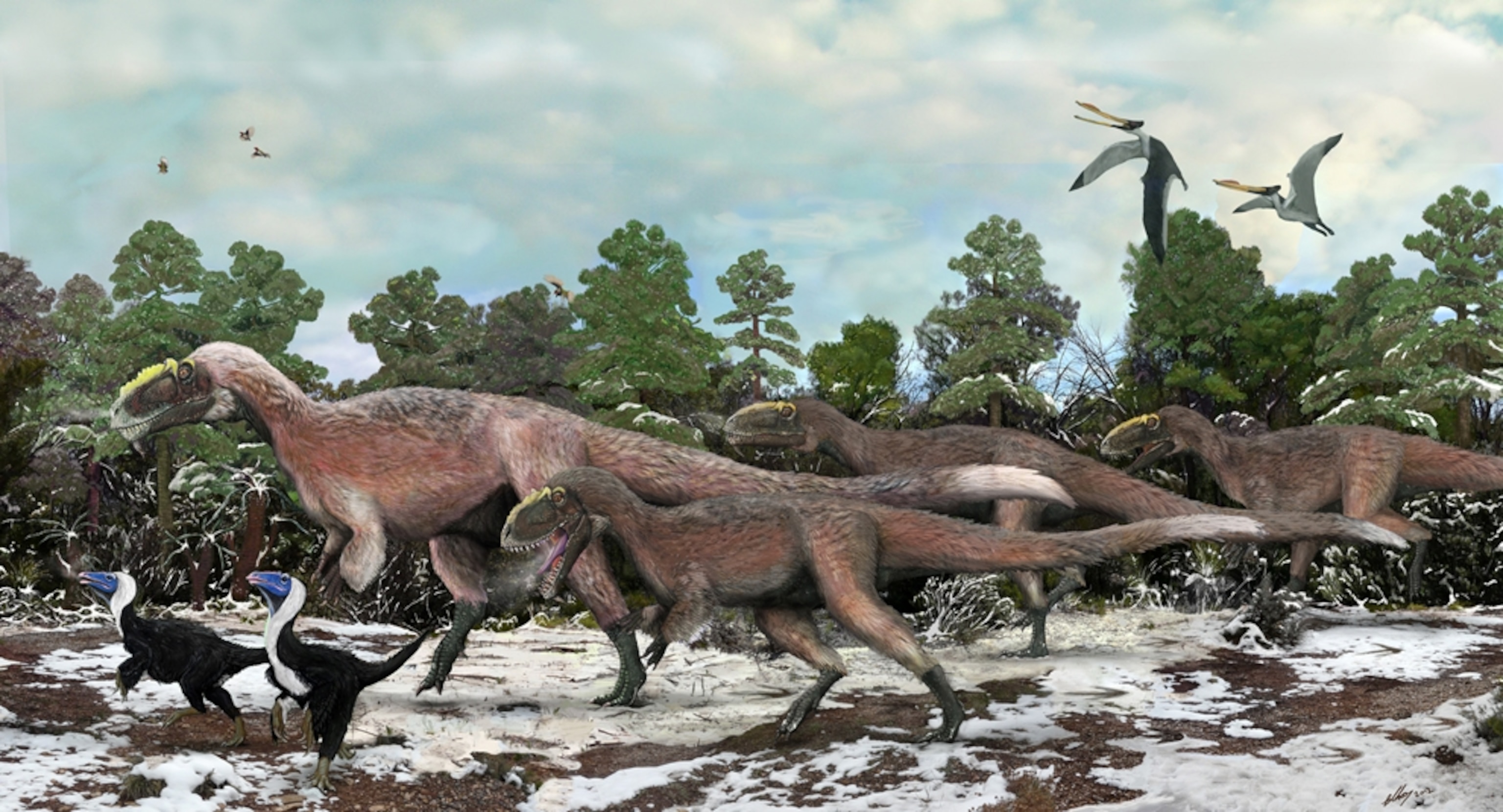
One-Ton Feathered Dinosaur Found: Fluffy and Fierce
Yutyrannus hints that T. rex, too, may have been downy soft.
A newly discovered giant feathered dinosaur—a distant cousin of Tyrannosaurus rex—sported a fine down coat, making it the largest feathered animal known to have lived, scientists say.
Paleontologists already knew that some members of the group of dinosaurs to which T. rex belonged, called theropods, were feathered. But most of the known feathered dinos were relatively small.
"It was a question mark whether larger relatives of these small theropods were also feathered," said study team member Corwin Sullivan, a paleontologist at the Chinese Academy of Sciences in Beijing. "We simply didn't have data either way, because soft-tissue preservation of any kind is so rare."
Now three tyrannosauroid fossils—one adult and two juveniles—offer clear proof that giant theropods could also be feathered. Their feathers were simple filaments, more like the fuzzy down of a modern baby chick than the stiff plumes of an adult bird.
The new dinosaur species, detailed in this week's issue of the journal Nature, has been named Yutyrannus huali—a Latin-Mandarin mash-up that means "beautiful feathered tyrant."
(Related pictures: "'Incredible' Dinosaur Feathers Found in Amber.")
Bus-Size "Chick"
The three 125-million-year-old specimens were collected from a single quarry in Cretaceous-era rocks in northeastern China's Liaoning Province. The region is where other famed feathered dinosaurs, such as the flashy Sinosauropteryx (picture), were discovered (prehistoric time line).
The researchers estimate that the adult Yutyrannus would have measured about 30 feet (9 meters) long and weighed about 1.5 tons (1,400 kilograms).
That makes it only about a fifth to a sixth the weight of its infamous cousin Tyrannosaurus rex—but some 40 times heavier than the largest previously known feathered dinosaur.
(Related: "New Dinosaur Discovered: T. Rex Cousin Had Feathers.")
The fossilized feathers—which range from about 6 to 8 inches (15 to 20 centimeters) long—were preserved in patches on different parts of the three fossils, leading the scientists to speculate that Yutyrannus's entire body was probably covered in feathers.
The creature's large size and the primitive state of its feathers rule out the possibility of flight, Sullivan said. Instead, the downy covering may have helped keep Yutyrannus warm.
"These are among the simplest types of feathers that we find in the fossil record ... and they show up in animals of small body size, where insulation would be really important," said paleontologist Tom Holtz of the University of Maryland, who was not involved in the study.
(Quiz: Test your dinosaur IQ.)
What Were Yutyrannus Feathers For?
That Yutyrannus might have needed feathers for insulation is somewhat surprising, because large-bodied animals typically retain heat quite easily.
Still, Yutyrannus lived during the middle part of the Early Cretaceous, when temperatures worldwide are thought to have been somewhat cooler than when T. rex lived, during the Late Cretaceous.
"Maybe a tyrannosauroid of comparable size [to Yutyrannus] in the Late Cretaceous wouldn't have needed feathers, whereas this animal did, just because of the climatic conditions," study co-author Sullivan said.
The University of Maryland's Holtz pointed out, however, that T. rex and its close relatives living during the Late Cretaceous wouldn't have limited them to warm environments.
"T. rex covered a huge range ... and there's no reason to think it wasn't in the Arctic Circle," Holtz said. "A lot of these animals had really big ranges north-to-south in North America, so they could easily have benefited from having some sort of plumage for insulation."
As a modern example of this, consider tigers, Holtz said. "Tigers live in the forests of Siberia down to the jungles of southeast Asia. It's true that Siberian tigers have thicker fur, but they're still furry down in the south."
It's possible that Yutyrannus's "protofeathers" served other functions besides keeping adult animals warm, the scientists say.
For example, the dinosaur may have used its feathers to keep its nest eggs warm. Additionally, the feathers may have been used for sexual display or as camouflage.
"None of these ideas are mutually exclusive," Holtz said.
Researchers next might examine tiny pigment-containing structures called melanosomes, which are possibly still preserved in the feathers, to get a sense of what Yutyrannus looked like, Holtz said.
This technique has been used recently to successfully determine the color of other feathered dinosaurs. (See "Dinosaur True Colors Revealed for First Time by Feather Study.")
"It should be able to work here" as long as the microscopic details are preserved, Holtz said. "Which means we may finally be able to know how at least one tyrannosaur was colored."
(Related: "New Feathered Dinosaur Found; Adds to Bird-Dino Theory.")
T. Rex Was Also Fiercely Fuzzy?
The latest finding increases the likelihood that the "tyrant lizard king," T. rex, was also feathered.
Scientists have speculated that T. rex juveniles were feathered, because they would have been small enough to require insulation. But it was thought the feathers might have disappeared as the animal grew older and larger.
"Well, here we have a large tyrannosaur that is fuzzy over much of its body ... and that greatly increases the chances that even [a dinosaur] that's six times larger may have retained feathers over most of its body," Holtz said.
And even covered in chicklike feathers, the giant T. rex would have been "just as fearsome as ever," Holtz added.
"Underneath the fluff, it's still the same gigantic crushing teeth and powerful jaws and softball-sized eyes staring at you," he said.
The downy feathers "might make it a little more amusing, but only until the point right before it tears you to shreds."

